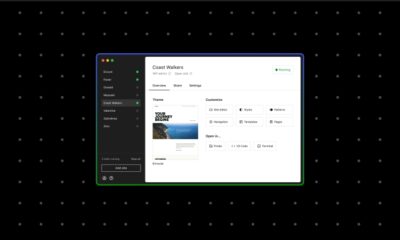MARKETING
4 strategies to help marketing teams improve workflow and collaboration
There’s nothing virtual about the sea change marketing teams have experienced in the last two years. The fact that marketers are working remotely over digital channels is a very concrete reality calling for new approaches to workflow.
Here are four tactics to help your team adapt.
Improve visibility and centralize
Virtual meetings, chat apps, automated calendars and workflow management software all became necessary to bring together teams from remote workspaces. In many cases, these remote work tools brought better visibility to small or subtle tasks that slipped under the radar in a traditional work environment.
The next step is to make sure all the key people can see into the workflow.
“You would want to have visibility across the board about what’s happening and who is delivering what at which time,” said Annie Schneider, senior product marketing manager for Wrike, a Citrix company, in her presentation at The MarTech Conference (scroll down to watch the video of their session).
The work can be consolidated into a calendar or united around a specific project, like a campaign or major content project.
“It could be looking at some sort of bird’s eye view or dashboard, or things that are coming in, so you have the view of things that are coming and things that are already live,” said Schneider.
This unified view into the work can also be divided by regions, according to the specific countries or timezones where a global workforce is doing their work.
Read next: What is digital transformation?
Encourage effective collaboration
At each step in the creation of a project, individual team members have to be able to mark their progress and move the project forward.
“There needs to be an easy way to collaborate on asset creation, including proofing and approvals,” Schneider said. “There also needs to be an easy way to control versions of the assets, and the ability to track who made the change.”
One especially important tool for effective collaboration is an audit log that team members can sign, and also have the ability to revert and go back after a change is made in the project.
It’s up to leadership, in coordination with IT or a committed martech team, to make sure that members have the right access to the workflow, and that the user experience is seamless.
“Marketers thrive when they’re able to do their work all in one place instead of toggling between multiple tools,” said Schneider. “So on the back end of this, it means the tools and processes in martech are connected in a way that the transition from one tool to another is seamless to the user.”
Remove bottlenecks
The traditional office environment is very dependent on meetings, where everybody stops work and waits for the next cues to happen. This creates bottlenecks with a truly remote team that is dispersed in different regions and timezones.
“Because of the evolving global workspace, work often doesn’t get accomplished in the same location or pretty much never does anymore,and it usually doesn’t get accomplished at the same time,” said Schneider. “People have to sometimes wait 12 hours to move along on a project collaboration with their counterparts across the globe.”
When team members can’t have conversations about the work, the technology that manages the project should be able to guide members instead. Individuals will have the ability to see directly for themselves at what stage the project is, instead of learning this indirectly through other team members in conversation or meetings.
Track results and optimize
When marketing projects are centralized using digital tools, this also makes it easier for the team to track the project’s results.
“It’s important to be able to track results of your marketing activities and the impact that they actually make,” said Schneider.
By comparing the impact of campaigns and projects with the individual tasks that go into creating it, the marketing team can get a better handle on ROI and optimize the workflow with fewer steps on future projects.
“It’s all connected because data gives you the information that you need to optimize your content and the use of your marketing channels in an effective way,” said Schneider.
She added, “This means that because marketing has such diverse functional teams within one department, companies have to be very thoughtful when selecting a work collaboration tool to ensure that it has the capabilities to address the needs of the entire marketing workflow and enable marketers to complete the whole process — from content creation to publishing, as well as including optimization, all in one place.”
Get the daily newsletter digital marketers rely on.
Reimagining collaboration: Removing barriers to better output from Third Door Media on Vimeo.














You must be logged in to post a comment Login